Have you ever wondered how to keep your DTH drill bits in top shape and extend their lifespan?
To minimize flank wear on DTH drill bits, it's crucial to choose the right bit for the rock type, maintain optimal air pressure, and avoid overloading. These strategies not only prolong the lifespan of your drill bits but also enhance drilling efficiency.
I remember the first time I faced significant downtime due to a worn-out drill bit. It was a frustrating experience that taught me the importance of matching the bit to the rock type. It's not just about having the right tools; it's about using them wisely. For instance, maintaining the correct air pressure can prevent excessive wear by reducing friction and overheating. And don't underestimate the impact of overloading—applying too much force can lead to premature wear. By focusing on these aspects, I learned to enhance my equipment's performance, saving time and money in the long run.
Using the correct bit reduces flank wear significantly.True
Selecting the appropriate bit for the rock type minimizes wear and tear.
Overloading drill bits increases their lifespan.False
Overloading causes excessive wear, reducing the lifespan of drill bits.
How does choosing the right drill bit reduce flank wear?
Ever felt like your drill bits just wear out too quickly? Picking the right bit can be a game-changer in minimizing flank wear and maximizing performance.
Choosing the right drill bit reduces flank wear by aligning bit design and materials with specific rock conditions, which enhances performance and extends the lifespan of the tool.
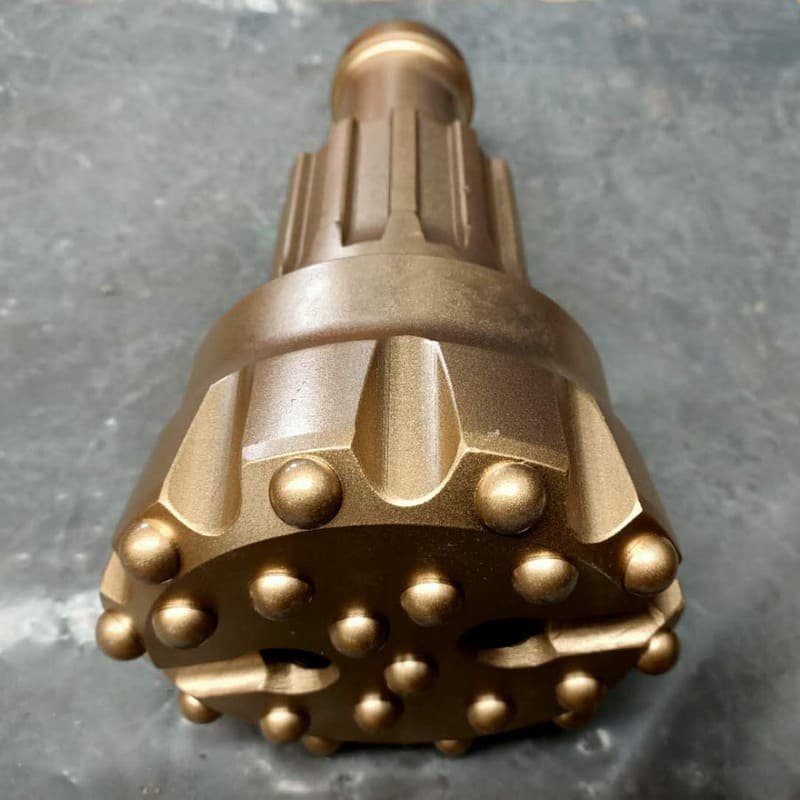
Understanding Flank Wear
I remember the first time I learned about flank wear—it was during a project where the bits kept giving out sooner than expected. Flank wear happens when the side of a drill bit wears down from all that constant grinding against the rock. The type of rock and the bit you use can really change how fast this happens.
Matching Bit to Rock Type
One of my aha moments came when I realized how crucial it was to match the bit to the rock type. Picture this: You're trying to get through soft rock, and a flat-face bit does the trick. But if you're up against hard rock, you're going to need something tougher, like a concave-face bit. It’s like picking the right shoes for a hike.
| Rock Type | Recommended Bit |
|---|---|
| Soft | Flat-face |
| Hard, Abrasive | Concave or Convex-face |
Importance of Bit Material
Bit material is another game-changer. I once swapped out standard bits for ones with tungsten carbide buttons for a particularly abrasive project—night and day difference! These inserts are fantastic at resisting wear, especially with abrasive rocks.
Optimizing Drilling Parameters
It's not just about the bit; tweaking drilling parameters can also play a part. I’ve learned to keep an eye on rotary speed and air pressure. If the speed's too high, you'll get extra heat; too low, and you might see uneven wear. And stable air pressure? That's key to reducing friction.
- Rotary Speed: Watch out—too fast means heat; too slow means uneven wear.
- Air Pressure: Keep it stable to keep friction down.
Effective Flushing Systems
Efficient flushing is another trick up my sleeve. Properly removing debris and cooling the bit can reduce heat, and in turn, wear on the flanks. Think of it like keeping your car’s engine cool.
Learn more about effective flushing1
Hardfacing and Coatings
Ever thought about hardfacing? Applying a tough coating can really help in abrasive conditions. It's like giving your bits a suit of armor against erosion.
Bit Selection Checklist
- Assess rock type and hardness.
- Choose a bit with appropriate face design.
- Ensure correct hardness and inserts.
- Optimize drilling parameters continuously.
- Maintain flushing system efficiency.
- Consider hardfacing or coatings if necessary.
By paying attention to these factors, I’ve been able to manage flank wear much more effectively, making my tools last longer and improving my overall drilling efficiency.
Flat-face bits are best for soft rock drilling.True
Flat-face bits effectively reduce wear in soft rock due to their design.
High rotary speed always reduces flank wear.False
Excessive rotary speed increases heat, leading to more flank wear.
How Does Air Pressure Optimization Prevent Wear?
Remember that time when a small tweak saved you a ton of hassle? Optimizing air pressure is just like that for industrial equipment.
Optimizing air pressure prevents excessive wear by ensuring consistent tool performance, reducing friction, and preventing overheating. This simple adjustment enhances debris removal and cooling during operation, extending equipment lifespan.
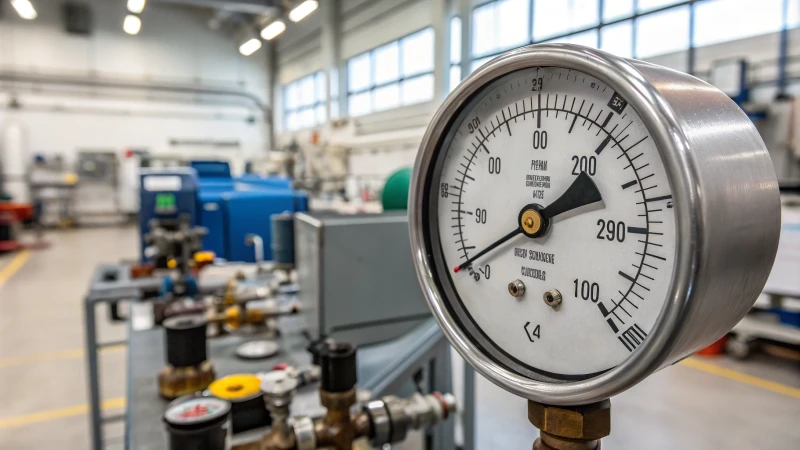
The Science Behind Air Pressure and Wear
You know those moments when a simple adjustment changes everything? That's how I feel about air pressure in drilling equipment2. It's all about balance—like finding the perfect spot on a seesaw. When air pressure is just right, it reduces stress on equipment parts, keeping wear at bay.
-
Friction Management: Picture a dance floor where everyone moves smoothly—optimal air pressure minimizes friction, just like that. In systems like pneumatic drills, where parts are in constant motion, it ensures longevity.
-
Heat Dissipation: Remember those old fans that kept the room cool? Air pressure acts similarly, dissipating heat from mechanical operations. Proper pressure means no overheating, no material breakdown.
Strategies for Optimizing Air Pressure
Implementing effective strategies to optimize air pressure feels like assembling a puzzle. Each piece has its place, and once everything fits, the picture is clear:
| Strategy | Description |
|---|---|
| Regular Monitoring | Continuously check pressure levels to ensure they remain within optimal ranges for your specific equipment type. |
| Automated Controls | Utilize automated systems that adjust pressure based on real-time data to prevent deviations that could lead to wear. |
| Scheduled Maintenance | Conduct regular maintenance to detect leaks or blockages that could affect pressure efficiency. |
| Training and Best Practices | Train operators on best practices for air pressure management to prevent human errors that might lead to improper settings. |
Impact on Different Equipment
Every tool responds differently to air pressure changes, kind of like how we each react to caffeine. Understanding these nuances can guide your approach:
-
Pneumatic Systems: These systems depend on air pressure much like I depend on my morning coffee. Inadequate pressure leads to insufficient force and misaligned tool engagement, causing wear.
-
Compressors and Blowers: Consistent air pressure is their lifeline. Without it, components can overload and wear out faster.
By honing in on these elements, industries can trim maintenance costs and stretch equipment lifespan through strategic air pressure optimization. Managing air pressure isn't just about efficiency—it's about building a sustainable operation that stands the test of time.
Optimal air pressure reduces friction in pneumatic drills.True
Maintaining the right air pressure minimizes friction, reducing wear.
Excessive air pressure prevents overheating in compressors.False
Excessive pressure can cause overheating; optimal levels are needed.
Why is avoiding overloading crucial for bit longevity?
Ever wondered why your drill bits seem to wear out quicker than you'd like? The secret lies in avoiding overload.
Overloading drill bits speeds up wear and tear, reducing their lifespan and performance. By carefully managing axial and rotational forces according to manufacturer guidelines, you can minimize overheating and flank wear, thus prolonging the life of your drill bits.
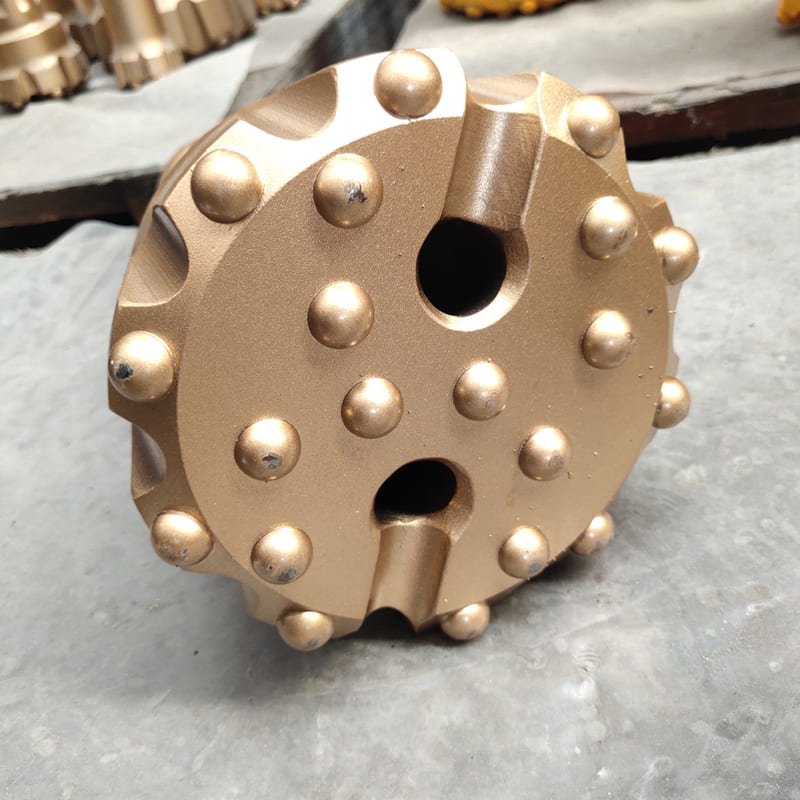
Understanding Overloading
I remember my first attempt at a major drilling project. I was so eager to get the job done that I pushed the drill bit way too hard. It felt like the bit was working against me, but what was actually happening was overloading. Overloading happens when too much force is applied, causing the bit to wear out faster, heat up, and even fail. Keeping these forces in check is key to maintaining optimal performance.
Effects of Overloading on Drill Bits
During another drilling task, I noticed that my bits weren't lasting as long as they should. It turned out that overloading them had increased friction, causing heat build-up and premature wear. Not only did this make my drilling less efficient, but it also meant I had to replace bits more frequently, which hit my wallet hard.
| Impact | Result |
|---|---|
| Increased Friction | Heat build-up |
| Excessive Wear | Reduced bit lifespan |
| Uneven Wear Patterns | Decreased drilling efficiency |
Strategies to Avoid Overloading
-
Follow Manufacturer Guidelines
- I learned the hard way that ignoring these guidelines can lead to costly mistakes. Sticking to recommended torque and feed rates helps prevent overloading and ensures the bit operates within safe limits.
-
Optimize Drill Rotation Speed
- Adjusting the rotation speed based on the bit design and rock type can make a huge difference. High speeds can cause overheating, while low speeds can lead to uneven wear.
-
Monitor and Adjust Parameters
- Now, I regularly monitor drilling parameters and make adjustments to maintain bit efficiency3. This practice has helped me adapt to changing rock conditions and extend the life of my bits.
Importance of Proper Flushing
I've learned that proper flushing isn't just a suggestion—it's crucial. Adequate flushing cools the bit and removes debris, reducing friction and wear. Ensuring that flushing systems are operational can greatly enhance bit longevity.
Material Selection and Coatings
Selecting bits with the right material hardness and coatings can improve resistance to abrasion. For those tough, abrasive conditions, I've found that hardfacing materials4 offer added protection against wear.
Overloading causes drill bit overheating.True
Excessive forces increase friction, leading to heat build-up.
Ignoring manufacturer guidelines prevents bit wear.False
Following guidelines minimizes overloading and wear.
What are the best flushing practices to minimize wear?
Ever wondered how to keep your plumbing running smoothly for years? I've been there, and I've got some insights to share!
To reduce wear in flushing systems, I keep the pressure consistent, choose gentle cleaning agents, and make regular inspections a habit. These steps help me minimize friction and keep everything flowing efficiently.
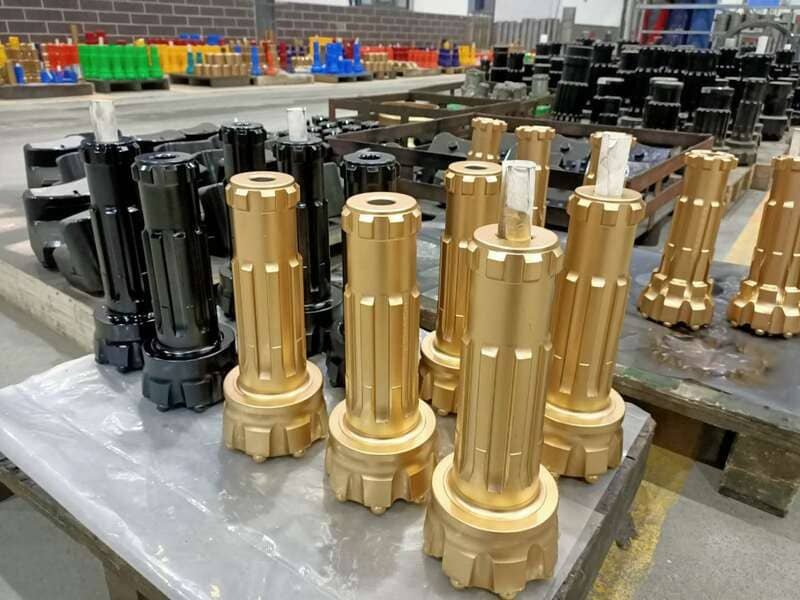
Optimize Flushing Pressure
I remember the time I realized my flushing system was wearing down faster than expected. It turned out, the pressure was all wrong! Maintaining optimal pressure is essential. Too high or low can really wear things out. I learned to regularly check the valves and ensure everything stays within the manufacturer's recommended range to avoid wear and tear5.
Use Appropriate Cleaning Agents
I used to think any cleaner would do the job—until I noticed the wear on my system. That's when I switched to enzyme cleaners and vinegar solutions. They’re gentle yet effective, protecting components from erosion.
| Type of Cleaner | Recommended Use | Benefits |
|---|---|---|
| Enzyme Cleaners | General maintenance | Safe for all components |
| Vinegar Solutions | Descaling | Natural and non-corrosive |
It's a little change that makes a big difference in preventing material degradation6.
Regular Inspection and Maintenance
After a minor leak turned into a major problem, I learned the hard way about regular checks. Now, I inspect seals, hoses, and connections routinely for any signs of wear or leakage7. Catching wear early is key. Scheduling professional assessments ensures nothing slips through the cracks.
Implement Wear-Resistant Materials
Once, while upgrading my system, I opted for components made from stainless steel. It was a game-changer! Durable materials like these significantly cut down on wear. Exploring innovative materials can really pay off in reducing abrasion8 over time.
Monitoring Flushing Patterns
I installed a smart monitoring system last year, and it’s been a revelation. By tracking usage, I can adjust my maintenance schedule proactively. Understanding how my system is used helps me make informed decisions about maintenance schedules and potential system upgrades9, preventing unnecessary wear.
Optimal flushing pressure reduces wear and tear.True
Maintaining stable pressure within recommended levels prevents damage.
Harsh chemicals are best for cleaning flushing systems.False
Harsh chemicals can erode components; use gentle, eco-friendly agents.
How Can Drilling Parameters Be Adjusted for Optimal Performance?
I remember the first time I realized how much tweaking drilling parameters could change everything. It was like a light bulb moment in the field.
To optimize drilling performance, adjust parameters such as rotary speed, feed rate, and air pressure according to rock conditions. This practice minimizes equipment wear and maximizes efficiency, ensuring smoother operations and cost savings.
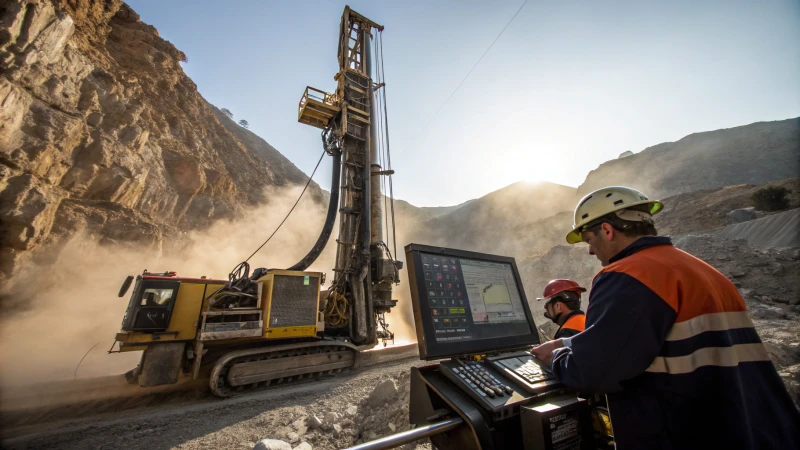
Understanding Drilling Parameters
Every drilling project has its own personality, and getting to know it starts with understanding the core parameters: rotary speed, feed rate, and air pressure. Think of these as the holy trinity of drilling efficiency.
-
Rotary Speed: Picture this. On a hot day, I once pushed the rotary speed too high, and the bit overheated faster than a coffee on a summer's day! Keeping it balanced is key. Adjusting the rotary speed can help manage heat generation and wear. Faster speeds may lead to overheating, while slower speeds can cause inefficiencies.
-
Feed Rate: Imagine biting into a piece of rock candy too fast—ouch! That's what happens if the feed rate is off. A smooth, controlled approach ensures the bit does its job without overexertion. A balanced feed rate10 ensures optimal contact without overloading the bit.
-
Air Pressure: One time, a colleague didn't check the air pressure, and we ended up with more debris than we knew what to do with. Lesson learned: keep it just right for debris flushing and cooling. Correct air pressure is crucial for flushing debris and cooling the bit.
Techniques to Adjust Parameters
So, how do you keep everything humming along smoothly?
-
Automated Monitoring Systems: These are like having a co-pilot who never blinks. Real-time data helps you adjust parameters on-the-fly, keeping performance optimal.
- Utilize systems that provide real-time data on drilling conditions.
- These systems can automatically adjust parameters based on feedback.
-
Manual Adjustments: I've spent many hours teaching operators to trust their gut while watching bit wear. It's about listening to what the drill tells you.
- Train operators to observe key indicators like bit wear and adjust parameters accordingly.
-
Environmental Adaptations: Ever noticed how things work differently in a humid jungle versus a dry desert? Adjusting for these external factors is crucial.
- Consider external factors such as temperature and humidity that might affect drilling operations.
Example Table: Parameter Adjustment Guide
| Rock Condition | Recommended Speed | Suggested Feed Rate | Optimal Air Pressure |
|---|---|---|---|
| Soft Rock | Low | High | Medium |
| Hard, Abrasive Rock | Medium | Medium | High |
| Fractured Rock | High | Low | Low |
Monitoring Performance
Constant vigilance is your best friend here. I learned early on that data doesn't lie—regular checks and feedback loops are essential.
-
Data Analysis: Spotting trends early can save countless hours of downtime by regularly reviewing performance data to identify trends and issues using performance tracking tools11.
-
Operator Feedback: Some of the best insights come from those in the thick of it, so encourage them to share their experiences which can aid in fine-tuning settings for specific conditions.
-
Regular Maintenance Checks: A stitch in time saves nine. Routine checks can spot issues before they become headaches by preventing unexpected downtime and identifying potential areas for parameter adjustments.
By integrating these practices into your operations, you'll see improved efficiency, longer equipment life, and a noticeable bump in savings—trust me, it's worth every minute spent fine-tuning.
Higher rotary speed reduces drill bit wear.False
Higher rotary speeds can increase heat and wear, reducing drill lifespan.
Automated systems improve drilling parameter adjustments.True
Automated systems use real-time data to optimize parameters efficiently.
How do hardfacing and coatings extend drill bit lifespan?
Ever found yourself replacing drill bits more often than you'd like? Let me take you through how hardfacing and coatings can give those bits a much-needed extended lease on life.
Hardfacing and coatings significantly enhance drill bit lifespan by applying protective layers that reduce wear and tear. These methods resist erosion and abrasion, especially in harsh drilling environments, prolonging the tool's service life.
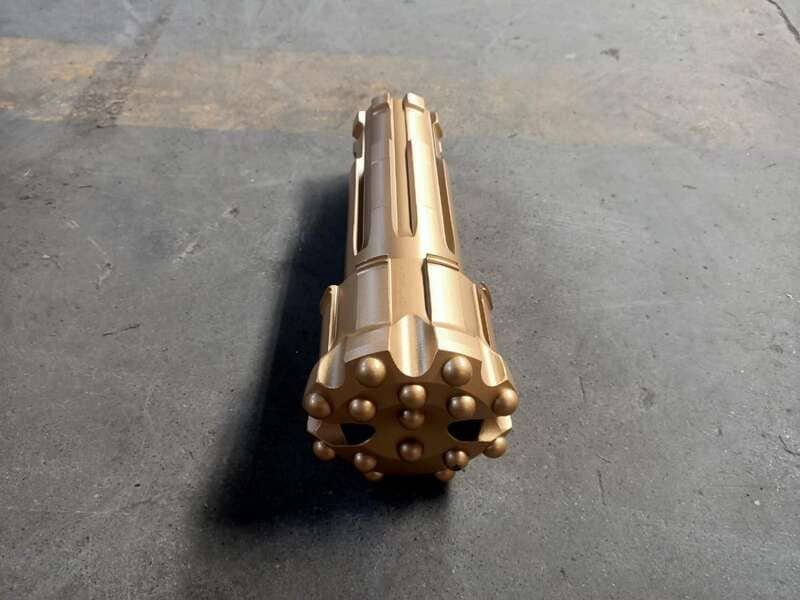
My Journey with Hardfacing Techniques
I remember the first time I realized the power of hardfacing. It was during a particularly challenging project where my drill bits were wearing out faster than expected. I stumbled upon hardfacing techniques, which involve applying a tough layer of material onto the surface of drill bits to enhance their wear resistance12. Materials like tungsten carbide and chromium carbide came highly recommended for their hardness and durability. This protective layer essentially acts as a shield, allowing the drill bit to brave abrasive forces without succumbing too quickly.
What I've Learned about Hardfacing Benefits
- Increased Durability: Think of hardfacing as putting armor on your drill bits. It’s this extra protection that’s kept my tools functional far longer than before.
- Cost-Efficiency: While the initial investment might pinch a bit, I’ve noticed fewer replacements, which has been a relief on the pocket over time.
A comparison of common hardfacing materials:
| Material | Hardness (Vickers) | Typical Use Cases |
|---|---|---|
| Tungsten Carbide | 1600-2000 | Mining and rock drilling |
| Chromium Carbide | 600-800 | General drilling applications |
Navigating Coatings in Drill Bit Performance
Coatings took me by surprise with their subtle yet effective way of enhancing drill bit performance. Unlike hardfacing, coatings apply thin layers of compounds to minimize friction and thermal wear. When I tried titanium nitride (TiN) and diamond-like carbon (DLC), I saw an immediate improvement.
Advantages I've Noted with Coatings
- Reduced Friction: Coatings work wonders by smoothing surfaces, cutting down heat generation and naturally extending bit lifespan.
- Enhanced Resistance: These coatings act like an invisible barrier against the chemical attacks that can occur during drilling.
Example of coating impact:
| Coating Type | Friction Coefficient | Application Benefits |
|---|---|---|
| Titanium Nitride | 0.4 | Improved cutting efficiency |
| Diamond-Like Carbon | 0.1 | Increased hardness and longevity |
Making the Right Choice for Your Needs
When deciding between hardfacing and coatings, it all boils down to project specifics. For instance, if you're dealing with abrasive environments13, hardfacing might be your best bet. On the flip side, precision projects could benefit more from coatings.
Key Considerations I've Discovered:
- Material Type: Matching the protection method with geological conditions is crucial.
- Cost vs. Benefit: Consider long-term savings against the initial investment.
Both hardfacing and coatings have significantly improved my drill bit lifespan. Understanding what your specific needs are will help guide you in selecting the most effective solution.
Hardfacing increases drill bit durability.True
Hardfacing adds a protective layer, reducing erosion and extending lifespan.
Coatings increase friction on drill bits.False
Coatings reduce friction, minimizing heat and wear, extending lifespan.
Conclusion
Minimize flank wear on DTH drill bits by selecting the right bit for rock types, optimizing air pressure, avoiding overload, and ensuring effective flushing and maintenance.
-
Explore how effective flushing systems can reduce flank wear by removing debris efficiently. ↩
-
Discover detailed insights into how air pressure impacts drilling efficiency and longevity. ↩
-
Learn effective strategies for maintaining drill bit efficiency through careful monitoring and adjustments. ↩
-
Discover how hardfacing materials enhance drill bit durability against wear in challenging conditions. ↩
-
Learn how pressure variations impact system wear and how to maintain optimal levels. ↩
-
Discover which cleaning agents are safe for your plumbing systems. ↩
-
Find out how to perform a thorough leak inspection to prevent wear. ↩
-
Explore materials that reduce abrasion and extend system life. ↩
-
See how smart systems can optimize usage and prevent wear. ↩
-
Discover how different rock types affect feed rates, ensuring efficient drilling without overloading the bit. ↩
-
Learn about tools that help in tracking and analyzing drilling metrics to improve operational efficiency. ↩
-
Learn more about how hardfacing enhances durability by resisting erosion in challenging conditions. ↩
-
Understand which method best suits various environmental conditions to optimize performance. ↩








